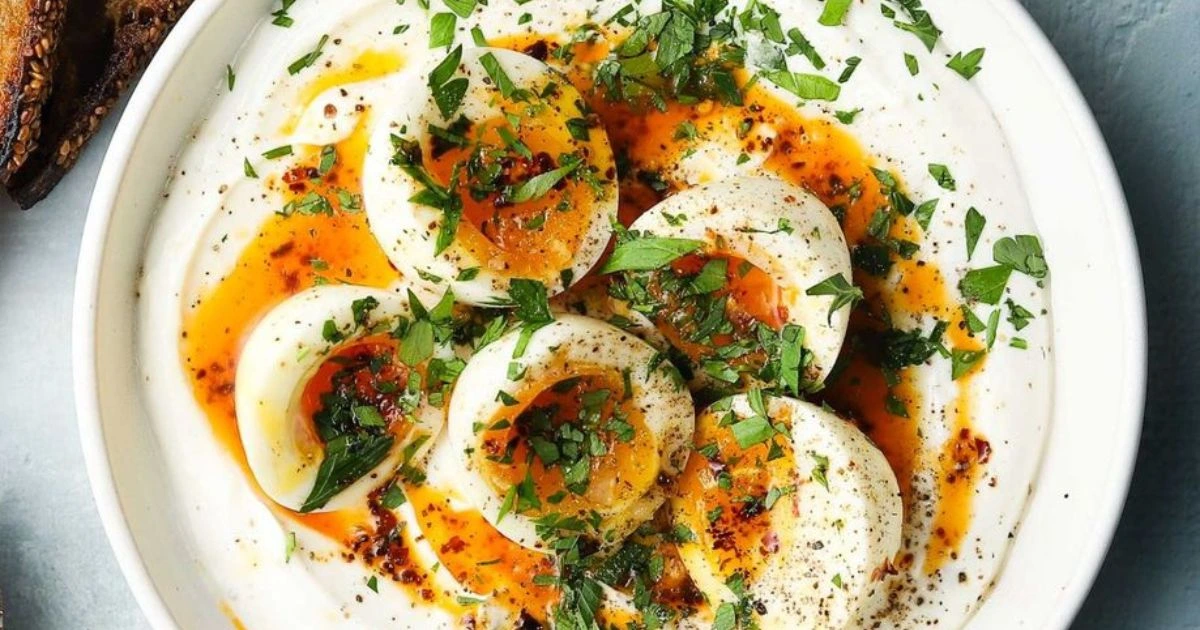Table of Contents
Jammy eggs are a hit at breakfast and brunch. They have a runny yolk and firm whites, making them delicious. They’re great for adding a special touch to your meals.
This guide will show you how to make perfect jammy eggs. You’ll learn about the science of the yolk and how to cook them just right. Soon, you’ll be making jammy eggs that impress everyone.
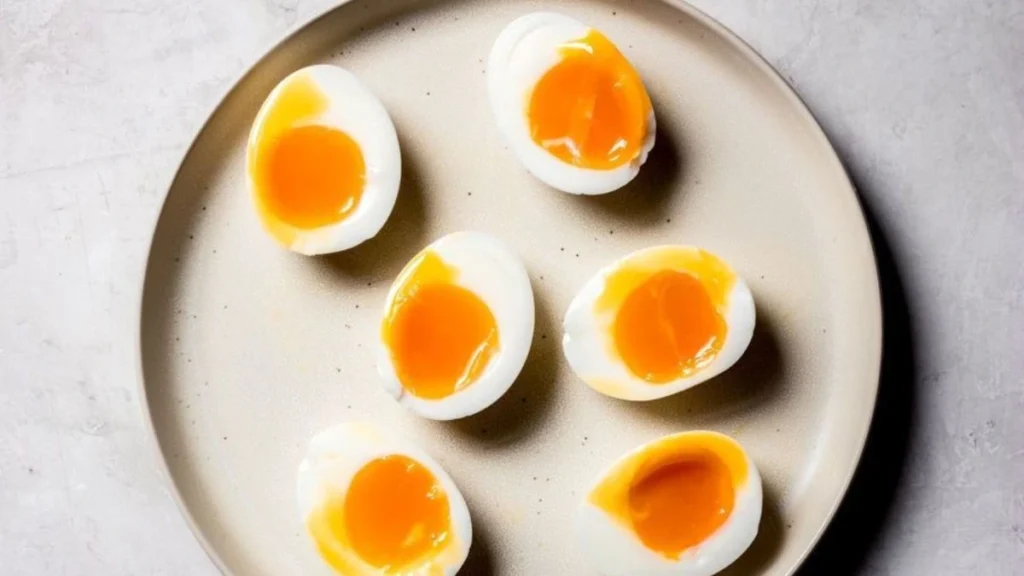
Key Takeaways
- Jammy eggs offer a delightful balance between a runny yolk and firm whites, creating a unique texture.
- Mastering the art of the jammy egg can elevate your breakfast and brunch dishes.
- This guide will teach you the science behind the perfect yolk consistency and the step-by-step cooking method.
- Learn tips and tricks to avoid common mistakes and ensure your jammy eggs turn out flawless every time.
- Discover serving suggestions and pairings to make the most of your perfectly cooked jammy eggs.
Understanding the Jammy Egg Phenomenon
The perfect jammy egg has become a big deal in the world of food. It’s loved by both food lovers and home cooks. But what makes an egg “jammy,” and how do you get that special yolk consistency?
What Makes an Egg “Jammy”?
A jammy egg has a soft, custard-like yolk that flows when you cut it. The whites should be set but still soft, not hard or overcooked. This mix of a soft yolk and tender white is what makes a jammy egg perfect.
The Science Behind Perfect Yolk Consistency
The secret to a jammy yolk is in the temperature and cooking time. As the egg heats up, the proteins in the yolk start to change and become semi-solid. Stopping the cooking at the right time gives you that jammy texture, where the yolk is just right.
Temperature and cooking time are key to the yolk’s texture. Cooking too long makes it hard and chalky, while cooking too short makes it watery. The goal is to find that sweet spot where the yolk is soft and the whites are just done.
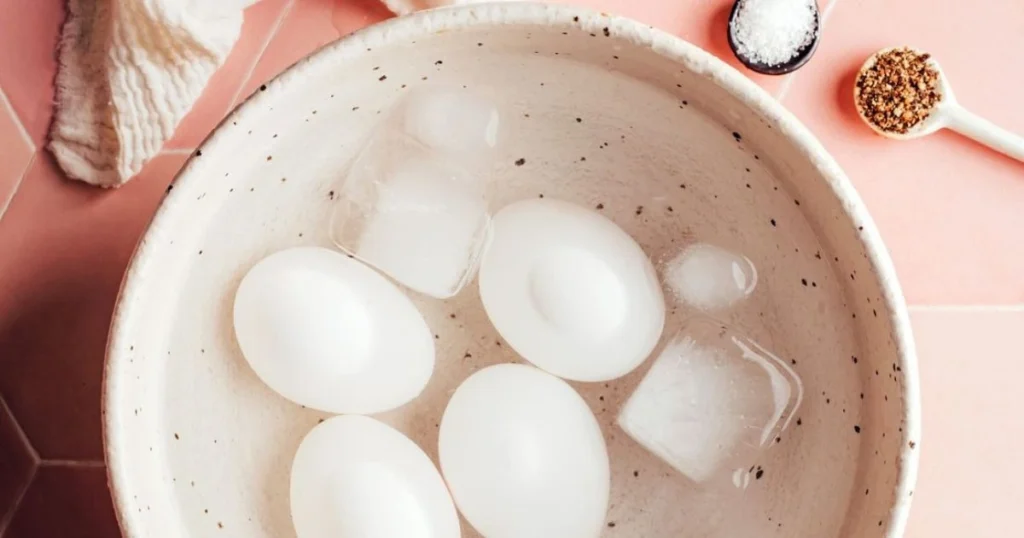
Essential Equipment and Ingredients
Making the perfect jammy egg needs a few key tools and top-notch ingredients. Whether you’re a pro chef or a home cook, the right gear makes a big difference. It helps get that runny yet not too loose yolk just right.
You’ll need a strong pot or saucepan, a timer, and a slotted spoon. These tools let you control the temperature and timing. Both are key to making the perfect jammy yolk.
The main ingredient is fresh, high-quality eggs. Using fresh eggs is crucial for the best taste. You might also want an egg piercer and an egg holder. They help prevent cracking and keep the eggs steady while cooking.
Necessary Equipment
- Pot or saucepan
- Timer
- Slotted spoon
Optional Tools
- Egg piercer
- Egg holder
Key Ingredient
High-quality, fresh eggs
| Equipment | Purpose |
|---|---|
| Pot or saucepan | Holds the water for cooking the eggs |
| Timer | Ensures precise cooking time for the perfect jammy yolk |
| Slotted spoon | Gently removes the cooked eggs from the water |
| Egg piercer | Helps prevent cracking during the cooking process |
| Egg holder | Keeps the eggs in place while simmering |
With these tools and ingredients, you’re ready to make perfect jammy eggs.
The Perfect Temperature and Timing Guide
To make the perfect jammy egg, you need to control the cooking temperature and timing well. Let’s explore the key points to master this tasty dish.
Water Temperature Basics
The right water temperature is crucial for a jammy egg. Keep the water between 144°F and 158°F (62°C to 70°C). This range helps the whites cook while keeping the yolks soft and creamy.
Timing for Different Egg Sizes
- Small eggs: 6-7 minutes
- Medium eggs: 7-8 minutes
- Large eggs: 8-9 minutes
- Extra-large eggs: 9-10 minutes
- Jumbo eggs: 10-11 minutes
These times are just a guide. You might need to adjust based on your taste and the cooking temperature of your water.
Altitude Adjustments
Cooking at high altitudes changes the timing and temperature needed for a jammy egg. Generally, add 1 minute for every 1,000 feet (305 meters) above sea level. You might also need to raise the water cooking temperature a bit to account for the lower boiling point at high elevations.
“The secret to a perfect jammy-egg lies in the delicate balance of temperature and timing.”
By using these tips, you’ll be able to make delicious jammy-eggs. They’ll please your taste buds and impress everyone around you.
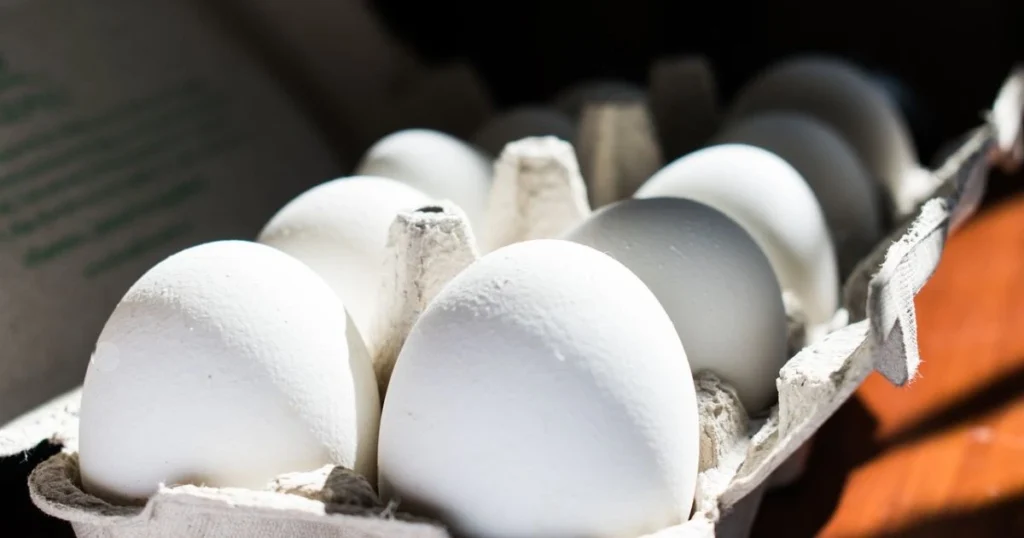
Step-by-Step Cooking Method
Getting the perfect jammy-eggs recipe is all about the cooking method. Follow these steps to get soft, creamy yolks every time:
- Fill a medium-sized saucepan with water, making sure it covers the eggs by an inch.
- Heat the water to a gentle simmer over medium heat. Don’t let it boil too hard, as it can overcook the eggs.
- Slowly add the eggs to the water, one at a time, with a spoon. This helps them not crack.
- Set a timer for 6-7 minutes for a classic jammy-egg.
- Keep the water temperature steady. Adjust the heat to keep it simmering gently.
- When the timer goes off, take the eggs out with a slotted spoon.
| Egg Size | Cooking Time |
|---|---|
| Large | 6-7 minutes |
| Extra-Large | 7-8 minutes |
| Jumbo | 8-9 minutes |
The cooking method is crucial for perfect jammy-eggs. With a bit of practice, you’ll make restaurant-quality jammy eggs in no time!
Ice Bath Technique and Its Importance
Getting the perfect jammy-egg texture is more than just cooking. The ice bath technique is key to achieving that runny yolk. It quickly cools the eggs, keeping the yolk luscious and runny.
Proper Ice Bath Setup
Fill a large bowl with ice and water to create an effective ice bath. The water should be cool, but not ice-cold. Aim for a temperature between 55°F and 65°F (13°C and 18°C).
Cooling Duration Guidelines
- For small eggs (50-60g), cool for 2-3 minutes.
- For medium eggs (60-70g), cool for 3-4 minutes.
- For large eggs (70-80g), cool for 4-5 minutes.
It’s important to remove the eggs from the ice bath when they’re just right. If you leave them too long, they’ll become overcooked and solid. This is the opposite of what you want in a jammy egg.
| Egg Size | Cooling Duration |
|---|---|
| Small (50-60g) | 2-3 minutes |
| Medium (60-70g) | 3-4 minutes |
| Large (70-80g) | 4-5 minutes |
Mastering the ice bath technique lets you make perfect jammy-eggs every time. You’ll get a runny, golden yolk that’s a joy to eat.
Peeling Tips and Tricks
Peeling jammy-eggs can be tricky, but with the right methods, it’s easy. Whether you’re a pro in the kitchen or just starting, these tips will make peeling your jammy eggs recipe simple.
Gently Crack the Shell
To peel eggs easily, start by gently cracking the shell all over. This separates the membrane from the egg white, making peeling smoother. Don’t crack too hard, as it can tear the whites.
Peel Under Running Water
Peeling your jammy-eggs under running water helps a lot. The water makes it easier to slide the shell off without harming the egg. Start by peeling the shell gently, moving around the egg.
Use Slightly Older Eggs
Older eggs peel more easily than fresh ones. As eggs get older, the air pocket inside the shell grows. This makes the shell easier to separate from the white. For the best egg peeling techniques, use eggs a few days old.
| Peeling Technique | Benefits |
|---|---|
| Gently crack the shell | Separates the membrane from the white |
| Peel under running water | Lubricates the process for smoother peeling |
| Use slightly older eggs | Larger air pocket makes the shell more easily separable |
By using these jammy-eggs recipe and egg peeling techniques, you’ll get perfectly peeled jammy eggs every time. Keep in mind, patience and a gentle touch are essential for the perfect result.
Common Mistakes to Avoid
Cooking the perfect jammy-egg seems easy, but mistakes can ruin it. Knowing these common errors helps you get that soft, runny yolk every time. These are the most common mistakes and how to prevent them.
Temperature Control Errors
Getting the water temperature right is key for jammy-eggs. If it’s too cool, eggs cook too long and become tough. If it’s too hot, whites get rubbery and yolks cook too fast. A kitchen thermometer helps keep the water at the perfect 145°F to 170°F.
Timing Mishaps
Timing is everything when cooking jammy-eggs. Cooking them too long makes yolks hard, while too short makes them runny. Use a timer to cook them just right, based on their size.
Storage Problems
Storing eggs properly is the last step. If you won’t eat them right away, cool them in an ice bath. This stops cooking and keeps yolks soft. Then, refrigerate them until you’re ready to eat.
Avoiding these mistakes helps you make perfect jammy-eggs. With practice and attention to detail, you’ll get those soft, gooey yolks every time.
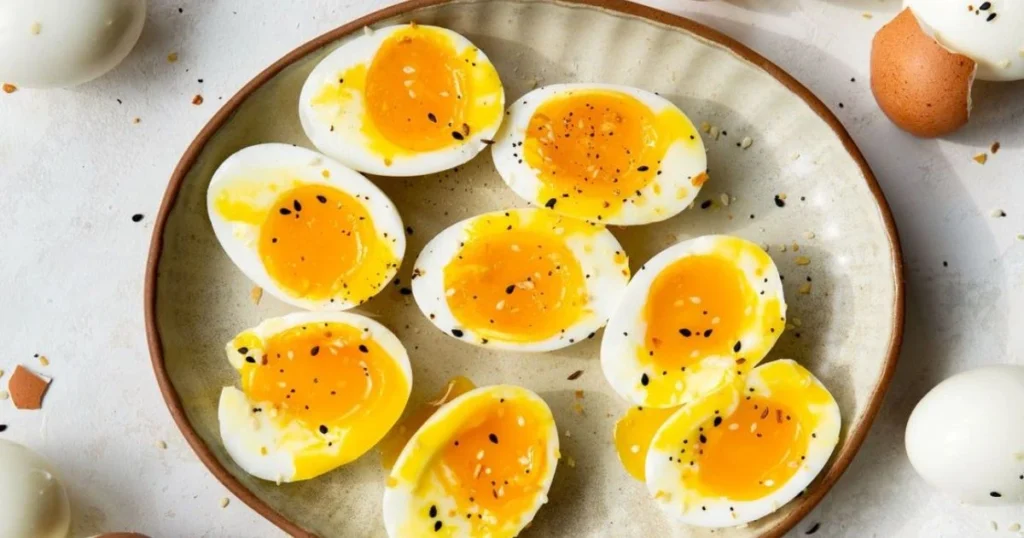
Serving Suggestions and Pairings
Jammy-eggs are great for many dishes. They can make breakfast, lunch, or dinner special. Try these tasty ways to serve and pair them for a delicious experience.
Breakfast and Brunch Pairings
Begin your day with jammy-eggs on avocado toast. The creamy yolk and avocado are a perfect match. For a filling breakfast, add jammy-eggs to savory ramen. They also go well with roasted veggies or a fresh salad.
Lunch and Dinner Inspirations
- Add jammy-eggs to a grain salad for a protein-rich lunch.
- Top a Caesar salad with jammy eggs for a twist.
- Place jammy-eggs on steamed rice or roasted potatoes for dinner.
There are many ways to pair jammy-eggs. Try different flavors like soy sauce or lemon. The golden yolk makes any dish look appealing.
| Jammy Egg Serving Idea | Flavor Pairings |
|---|---|
| Avocado Toast | Olive oil, sea salt, black pepper |
| Ramen Bowl | Soy sauce, scallions, sesame seeds |
| Grain Salad | Lemon juice, herbs, feta cheese |
| Caesar Salad | Parmesan, garlic, Dijon mustard |
| Rice or Potatoes | Soy sauce, scallions, chili oil |
Conclusion
You now know how to make the perfect jammy-egg. This skill can make your breakfast, brunch, or dinner better. It’s all about the runny yolk and the firm white.
Finding your perfect jammy-egg is all about trial and error. Adjust cooking times based on egg size and altitude. It’s enjoyable to discover what works best for you.
Enjoy your jammy-eggs in many ways, from alone to part of a big meal. This skill will make your cooking more exciting. It’s a great way to impress your loved ones.
FAQ
What makes an egg “jammy”?
A jammy-egg has a soft, creamy yolk that’s like jam. It’s cooked just right, so the yolk is runny but the whites are firm.
What equipment and ingredients do I need to make jammy eggs?
To make jammy-eggs, you need a pot, a timer, a slotted spoon, and fresh eggs. You might also want an egg piercer and holder for better results.
What is the ideal water temperature for cooking jammy-eggs?
The best water temperature for jammy-eggs is 145°F (63°C). This keeps the whites set and the yolks soft and creamy.
How long should I cook jammy-eggs?
Cooking time for jammy-eggs depends on egg size. For large eggs, cook for 6-7 minutes. Smaller eggs need less time, while bigger ones need more.
How do I properly peel jammy-eggs?
To peel jammy-eggs without breaking the whites, crack the shell gently all over. Then, peel them under running water. This makes the shell come off easily. Using older eggs also helps with peeling.
What are some common mistakes to avoid when cooking jammy eggs?
Avoid mistakes like not keeping the water at the right temperature and overcooking. Also, don’t store the eggs wrong. Keep the temperature steady, time it right, and cool them properly for perfect jammy-eggs.
How can I serve jammy-eggs and what flavors pair well with them?
Jammy-eggs are great in many dishes, like ramen, avocado toast, and salads. They go well with soy sauce, chili oil, and herbs because of their creamy texture.

